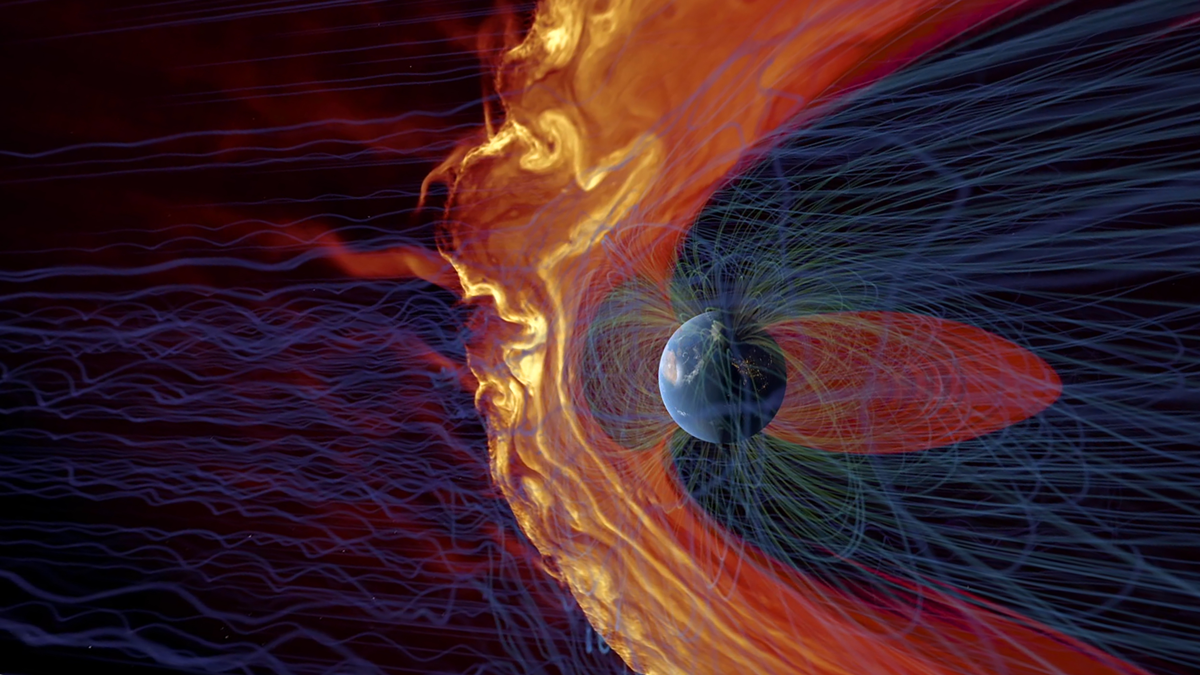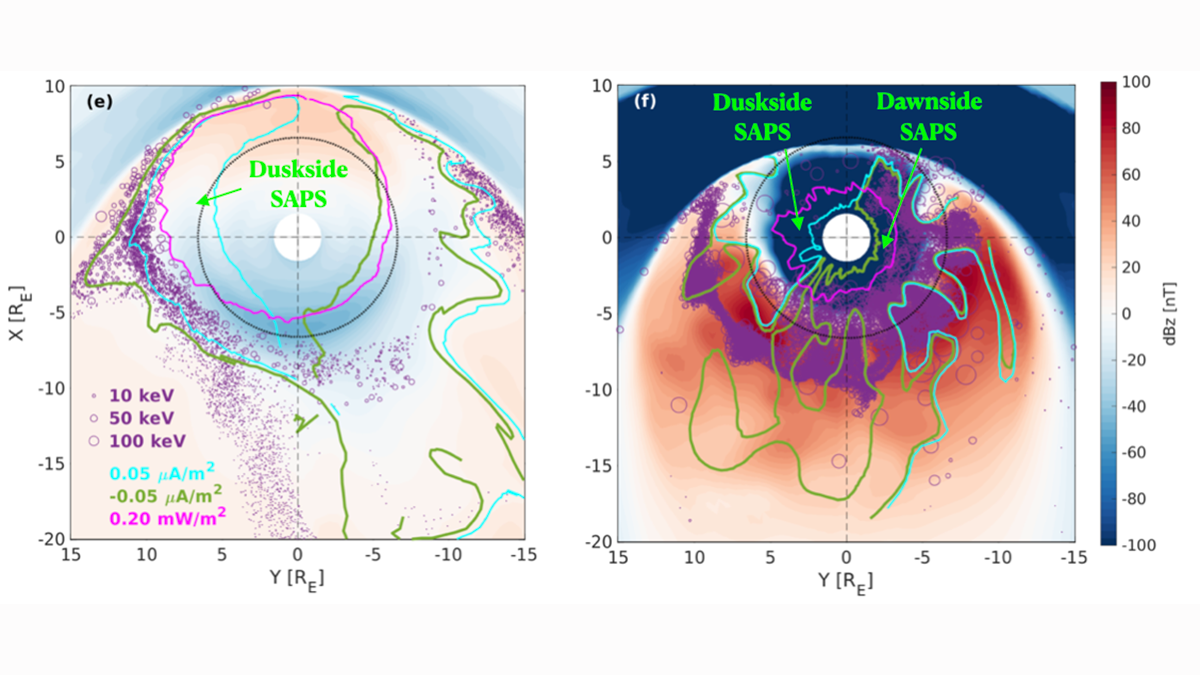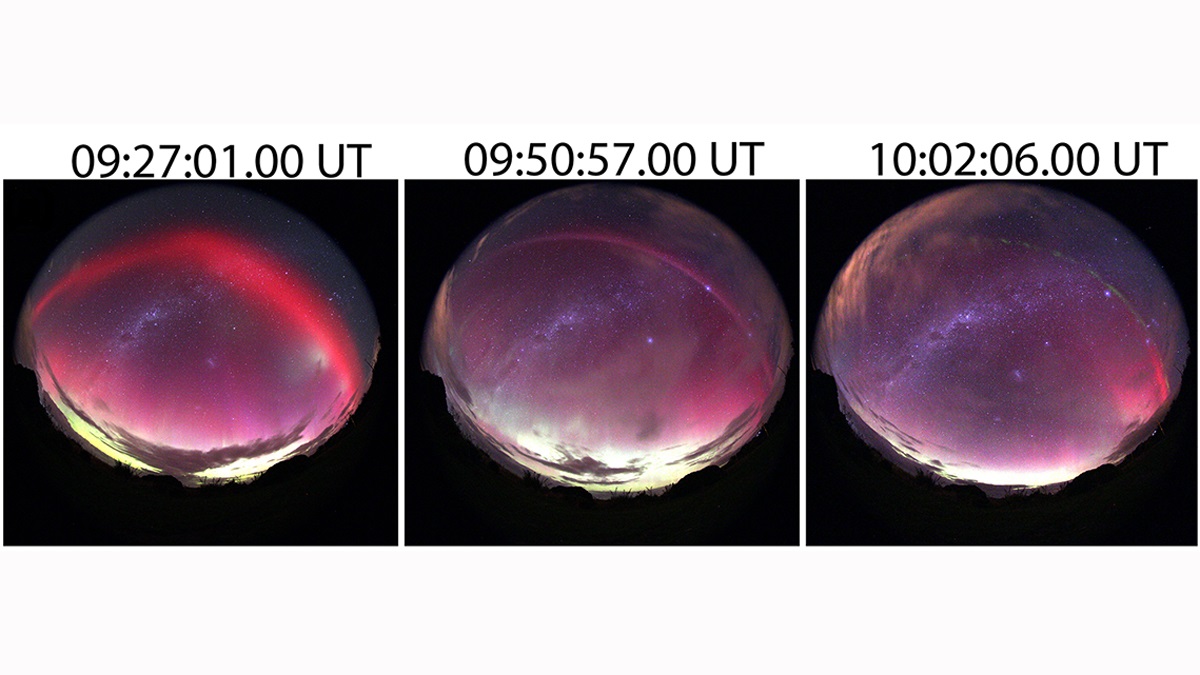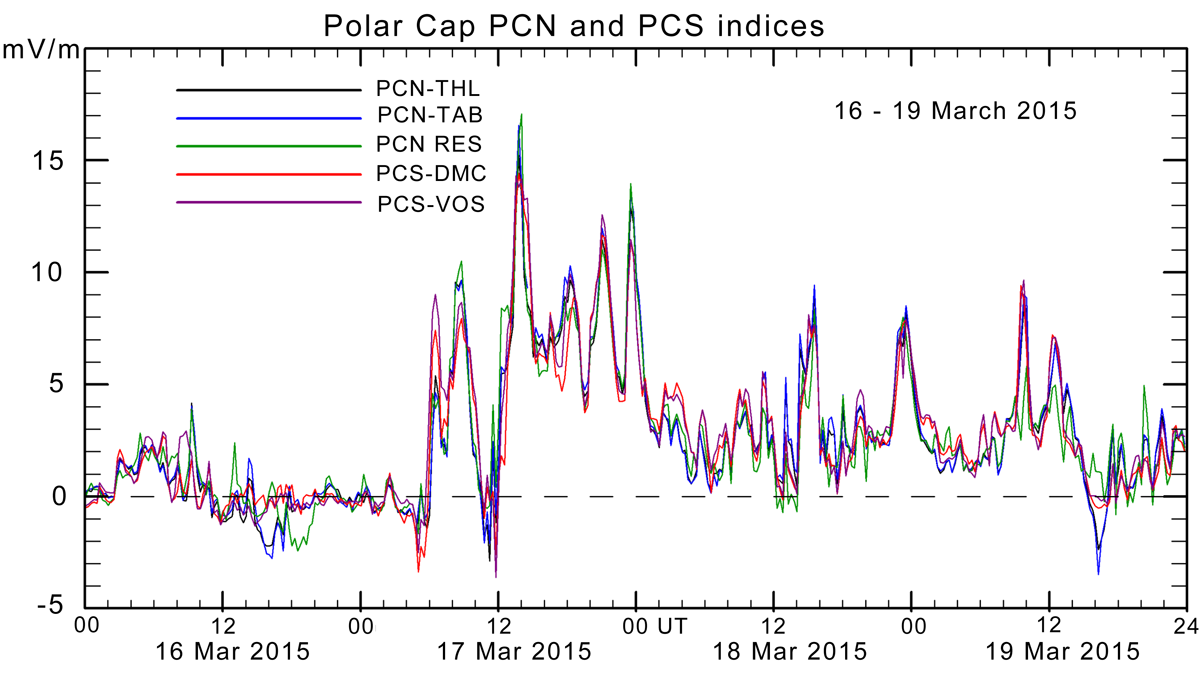Though not as damaging as extreme space weather events, showers of plasma jets hit Earth’s magnetic shield every day—yet we’re only beginning to understand their effects.
space weather (hazard)
Origin of Dawnside Subauroral Plasma Flows in Geomagnetic Storms
Geomagnetic storms induce fast plasma flows next to the aurora and affect space weather. Lin et al. explain the origin of a special “dawnside” plasma stream that occurs only during extreme storm events.
Shake, Rattle, and Probe
Helioseismology allows scientists to study the interior of the Sun, solve some basic physics mysteries, and forecast space weather.
11 Discoveries Awaiting Us at Solar Max
Each solar cycle might seem like the same old story, but one thing has changed significantly since the previous solar maximum–our technology.
Uncovering the Mysterious STEVE Aurora
Scientists present the first direct observations on the rapid evolution of a bright red auroral arc into a thin white-mauve arc known as STEVE.
Watching the Substorms Grow
Updated procedures enable consistent use of a wide network of polar magnetometers to monitor energy flow into the tail of Earth’s magnetosphere during the growth phase of substorms.
Chinese-Led Solar Research Is Looking Bright
With new missions underway and planned, China is stepping up to observe our nearest stellar neighbor.
Amateur Radio Observations Help Monitor Space Weather
Amateur radio observations provide a new method for studying large-scale ionospheric disturbances and HF communication impacts, and are important applications in ionospheric space weather monitoring.
A New Journey Around (and Around) the Sun
The Solar Orbiter just completed its commissioning phase while en route to the Sun. It has already provided valuable looks at solar campfires and Venus’s magnetic fields, and it promises much more.
Can Aurora Enhance Radar Monitoring of Arctic Aviation?
Enhanced E-region ionization produced by the aurora can be used to reflect signals from over-the-horizon radars and thus enable those radars to better monitor aviation in Arctic regions.










